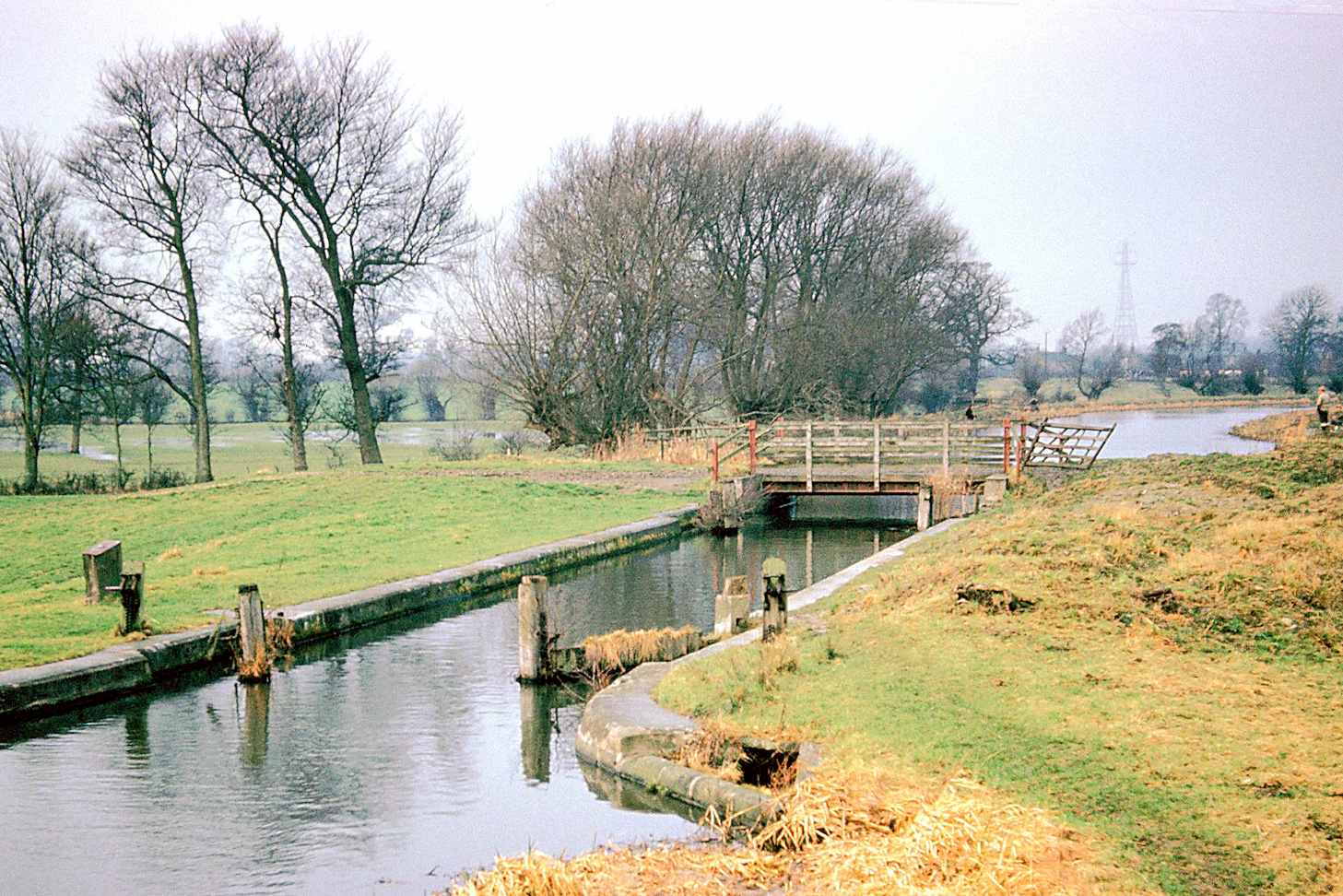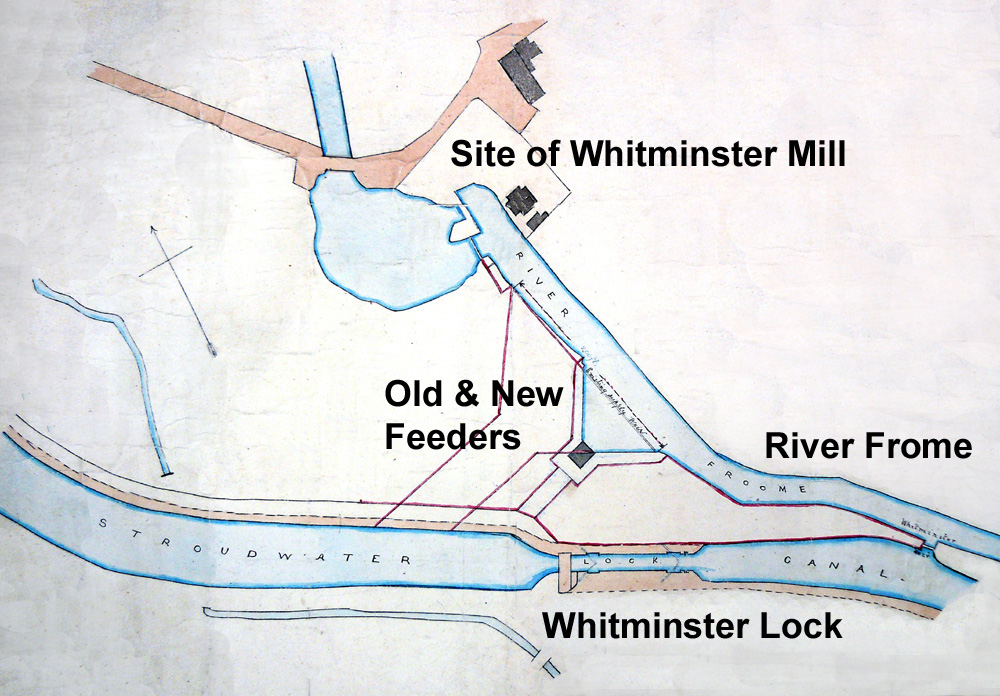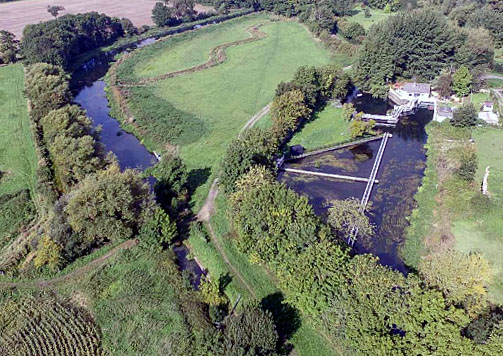The lock and the feeder from the River Frome were much influenced by the needs of the nearby Gloucester & Berkeley Canal which intersected the Stroudwater in the 1820s. (For sources, see end of page.)


After the pound below the lock was raised about five feet in the 1820s to match the level of the Gloucester & Berkeley Canal, Whitminster Lock only had a rise of a few inches. It was often referred to as Shallow Lock, and in due course all of the gates were left open.
Towards the end of the nineteenth century, there were occasional difficulties maintaining the level of the Gloucester & Berkeley Canal, and then heavily laden barges grounded in the pound above the lock. So in 1904 the lock was made effective again by raising the walls and gates by eight inches and raising the banks of the pound above to suit.
After the canal closed, the lock was filled in, but some restoration work was done by Cotswolds Canal Trust volunteers in the 1990s.
The bridge at the tail of Whitminster Lock gives access to the low-lying fields to the south, and it carries the towpath across the canal. In the early days it was known as Kings Bridge or Paper Mill Bridge, reflecting the owner/role of the nearby mill. After the canal closed in 1954, the former swing bridge was replaced by a fixed structure.


In the 1830s, the Gloucester & Berkeley Canal needed more water to replace that lost when vessels joined or left their canal at Sharpness. So they bought the water rights of the two lower mills on the River Frome, and they built a small feeder to allow water from the Frome to flow into the Stroudwater Canal and along to Saul Junction. This was replaced by a larger feeder c1877 to provide more water to suit a large new lock and dock at Sharpness.
Recognising that the water taken from the River Frome would bring silt into the Stroudwater Canal, it was part of the original agreement that the Gloucester & Berkeley Company undertook to dredge from the feeder to Saul Junction as required. In the early days, this meant a team of men working a spoon dredger for several weeks each springtime, but after Walk Bridge was widened in 1869, a steam powered dredger did the job in only two weeks.


The feeder is still in use today, now hidden behind a brick wall. After the Stroudwater Canal closed in 1954, the length to Saul Junction was bought by the British Transport Commission to maintain the water supply to what is now known as the Gloucester & Sharpness Canal.
This length still performs this role, now controlled by the Canal & River Trust, and it will continue to do so after the rest of the Stroudwater Canal has been restored. The outfall of the feeder is under a concrete ledge in the canal bank below the lock.
For problems with Shallow Lock and raising the level of the pound above, see D1180/9/23.
For creation of the Whitminster feeder, see many entries in D1180/1/3 & 4 and D1180/9/2.
For larger feeder, see D2460/4/7/9/3; D1180/1/6 p210-227.
For benefit of using a steam dredger, see D2460/4/4/1 Mar 1870.